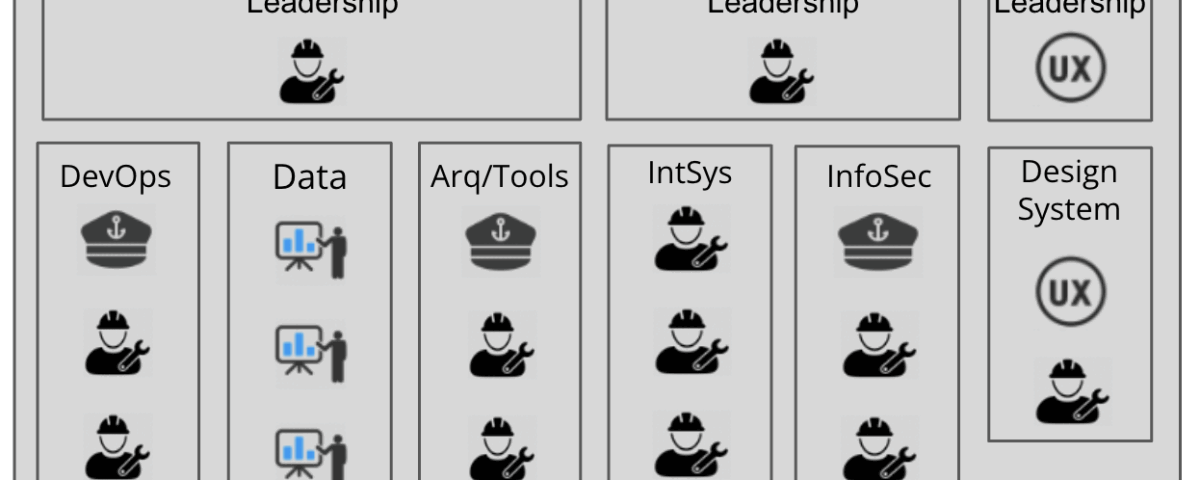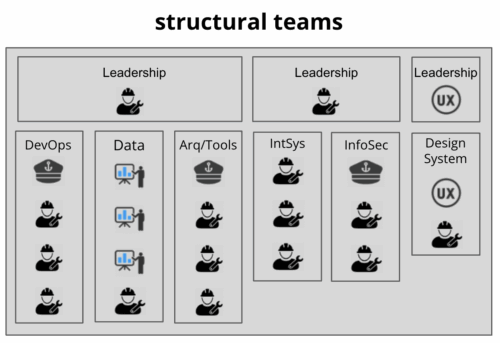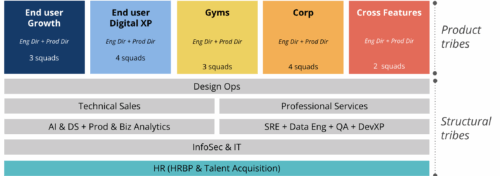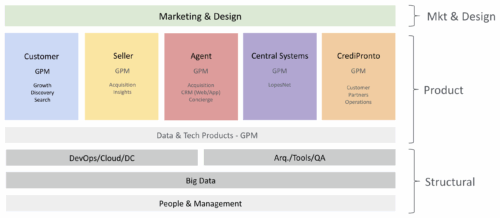
Product Development Team Topologies
28 de April, 2025
Team structure spreadsheet
14 de May, 2025This article is part of my latest book, “Digital Transformation and Product Culture.” It is another excerpt from the chapter on team structure, where we saw how to structure effective product development teams. Now we will see what are and how to organize structural teams.
Structural teams
Structural teams are the teams that work on the structure necessary for product teams to do their work.
Here are some types of structural teams necessary in the development of digital products:
- SRE or DevOps: SRE stands for Site Reliability Engineering. This area, sometimes referred to as DevOps, is responsible for the infrastructure where the product will be hosted and served to customers. It also involves monitoring the product and hosting infrastructure to ensure optimal performance.
- Data: In this area, there are typically three disciplines that need to be taken care of by the data team. First, a data engineering team is required to handle the infrastructure necessary for managing the company’s data. Next, there is the need for a data analysis team responsible for generating reports and dashboards based on data, showcasing the product’s performance. Finally, it’s also beneficial to have a data science team capable of extracting insights from the data and, eventually, creating machine learning algorithms that can evolve as more data is collected and analyzed.
- Architecture/Tools/Foundation: This team assists product teams in defining software architecture standards. Additionally, this team may work on topics that are common to all teams, such as authentication, authorization, and API infrastructure.
- Design Ops: This is a central design team that takes care of creating and maintaining the Design System, a library of components and interaction patterns. This team also handles the operational effectiveness of product designers, providing them with tools, empowering managers and leaders to assess the performance of these product designers, and assisting in onboarding. This team may also include professionals in user research and UX writing.
- Information Security: This team is responsible for all aspects of information security, such as LGPD, PCI certification, ISO 27001 certification, BYOD policies (bring your own device) to allow employees to use their own devices for work.
- Internal Systems: Responsible for managing third-party systems such as Google Workspace, Office 365, Slack, etc. It also takes care of the company’s equipment.
- Product Ops: Makes sense in large teams, with more than 150 people, and is responsible for the operational efficiency of product managers, providing them with tools, helping to see interdependencies, and assisting in the onboarding of new product managers.
- Sales Engineering: This area makes a lot of sense in companies that develop products for other companies. It’s a team with technical knowledge capable of discussing implementation and integration details of your product with the client’s systems.
- Professional Services: In case the implementation and inte- gration needs of a new client deviate from the standard, or the client is not prepared for this implementation or integration, it may be interesting to have a professional services team that handles this work. It is recommended that this team be very lean and use third parties as needed to perform implementation and integration work.
- HRBP and Hiring: As seen, product teams and their struc- tures are complex, with a lot of collaborative work and matrix structures. It is essential to have an HR team close by to assist in team management, with two main functions: HRBP (Human Resources Business Partners), who help with day- to-day HR-related issues for teams and leaders, and Hiring, which handles the entire process of attracting and hiring talent.
A great book for those interested in delving into the organization of structural technology teams is “Team Topologies: Organizing Business and Technology Teams for Fast Flow”, written in 2019 by Matthew Skelton and Manuel Pais. This book aids in designing technical teams, as well as the workflow among different teams. An important note: the book was written by technical people, for technical people. For this reason, when they discuss product teams, which deliver value to the customer, they refer to this type of team as a “Stream-aligned team,” without delving into the details I described here about the types of product teams that exist. Another point to note is that it only discusses technical structural teams, so it doesn’t cover HRBP and hiring teams, Professional Services, Technical Sales, Design Ops, and Product Ops. I discussed this book in my previous article.
Bringing together product teams and structural teams
As mentioned, structural teams provide the necessary infrastructure for product teams to operate effectively. Therefore, it is important for structural teams and product teams to coordinate their work to achieve good productivity and quality.
I have used two product management specializations quite successfully to assist in this coordination:
- Data Product Manager (DPM): Responsible for creating data products (algorithms, insights). They will interact with product teams to understand which data products may make sense for each of them.
- Technical Product Manager (TPM): Responsible for “productizing” tools that accelerate the productivity of other teams (AuthN/AuthZ, API, one-click deploy, etc.).
Here are two examples from Gympass and Lopes. At Gympass, we chose to have separate teams for Technical Sales and Professional Services. Another decision was to have the Data Engineering team alongside SRE, Architecture, and Tools.
At Lopes, the Marketing team was part of the Lopes Labs structure, given that marketing in the real estate market is primarily digital. We also chose to have the design leadership within the marketing team. In the image below, there is an additional tribe, CrediPronto, which was part of the Lopes Labs structure but worked with a focus on the CrediPronto business unit, dedicated to real estate credit. In this structure, we also made explicit the product organization, Data & Tech Products – GPM, which accompanied the structural teams.
Advanced topics
Next, I will talk about a series of topics that I consider advanced knowledge of team structure. They will help you define and manage your product development team at a higher level. Here are the topics I’ll cover:
- Spreadsheet to support team management
- Layoff/Downsizing
- CTO + CPO
- Internationalization
- Outsourced team
- Tuckman’s model
- Dependencies between teams
- Should we have a dedicated innovation team?
- Should we have a team dedicated to fixing bugs?
- Business Units
- Financial bonus
- What makes a group of people behave like a team?
Digital transformation and product culture
This article is another excerpt from my newest book “Digital transformation and product culture: How to put technology at the center of your company’s strategy“, which I will also make available here on the blog. So far, I have already published here:
- About the book
- Part 1: Concepts
- Chapter 1: The so-called digital transformation – Project and Product
- Chapter 2: Uncertainty and digital transformation
- Chapter 3: Types of company
- Chapter 4: Type of company vs digital maturity
- Chapter 5: Business models
- Chapter 6: Agile, digital and product culture
- Part 2: Principles
- Chapter 7: Deliver early and often – Measuring and managing the productivity – Case study: Dasa Group – Case study: Itaú Unibanco
- Chapter 8: Focus on the problem – O Famoso Discovery de Produto – Why the “business demands => IT implements” model does not work – Case study: Magazine Luiza
- Chapter 9: Result delivery – Outsource or internal team? – Case study: Centauro
- Chapter 10: Ecosystem mindset
- Part 3: Tools
- Chapter 11: Product Vision – Product vision examples
- Chapter 12: Product Strategy
- Chapter 13: Team Structure – Structuring effective product development teams – Structural teams
Workshops, coaching, and advisory services
I’ve been helping companies and their leaders (CPOs, heads of product, CTOs, CEOs, tech founders, and heads of digital transformation) bridge the gap between business and technology through workshops, coaching, and advisory services on product management and digital transformation.
Digital Product Management Books
Do you work with digital products? Do you want to know more about managing a digital product to increase its chances of success, solve its user’s problems, and achieve the company objectives? Check out my Digital Product Management books, where I share what I learned during my 30+ years of experience in creating and managing digital products:
- Digital transformation and product culture: How to put technology at the center of your company’s strategy
- Leading Product Development: The art and science of managing product teams
- Product Management: How to increase the chances of success of your digital product
- Startup Guide: How startups and established companies can create profitable digital products
